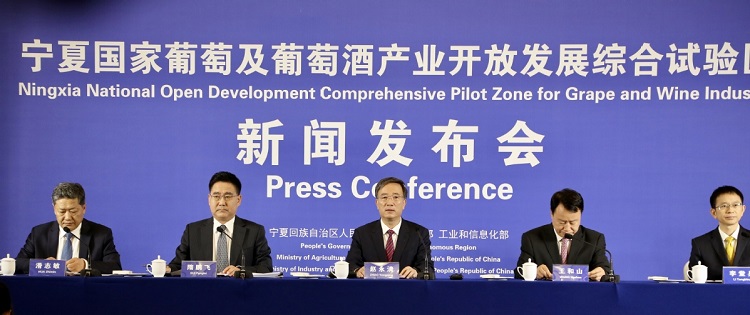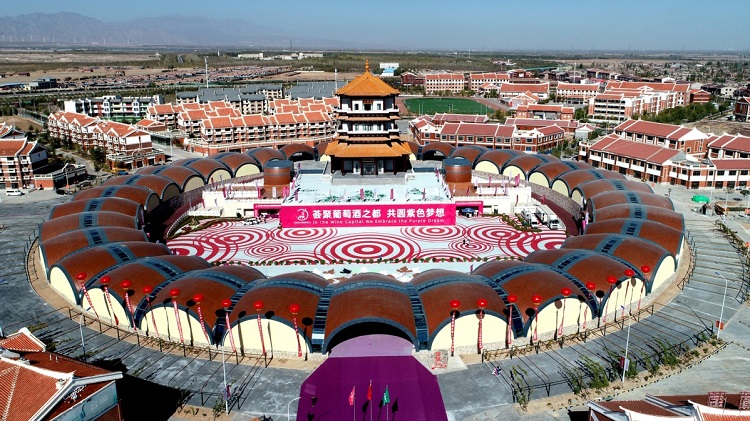
Ningxia regional government holds a news conference on the pilot zone on June 8, 2021. [Photo by Tao Getu/provided to chinadaily.com.cn]
China has set up a comprehensive experimental zone for the development and opening-up of the wine and grape industries in the Ningxia Hui autonomous region, as the wine-producing region has garnered global attention.
The pilot zone, the first set up in China for wine production, got the green light for its establishment from the State Council in May.
With abundant sunshine, little rainfall and semi-sandy soil, the zone boasts favorable conditions to grow grapes and it is expected to have 67,000 hectares of vineyards in five years and achieve sales revenue of 100 billion yuan ($15.6 billion) annually, according to the plan from the local government.
By 2035, the zone is expected to have 100,500 hectares of vineyards and generate annual sales totaling 200 billion yuan. By then, its scale will be similar to that of Bordeaux, a renowned wine-producing region in France, according to the plan.
The zone aims to become a production base for premier wines and export more products to countries and regions involved in the Belt and Road Initiative.
"We will grab the huge business opportunities emerging from the establishment of the pilot zone, and grow it as pillar industry for the high-quality development of the local economy," said Zhao Yongqing, vice-chairman of the Ningxia Hui autonomous region.
The pilot zone, which covers an area of 502.2 sq km in the eastern foothills of the Helan Mountains, so far has more than 30 varieties of wine grapes, which is similar to the numbers seen in Bordeaux, as well as in Napa Valley in the United States.
Yet, China still lacks a sufficient number of renowned wine brands. The zone will introduce more premium grape varieties from global wine producing regions and attract more professional international talents and techniques, and cultivate more wine tasters and winemakers. The winemaking sector in Ningxia also plans to better integrate itself with chateau travel and e-commerce sales, according to the local government.

The picturesque view of the Helanhong chateau in Ningxia. [Photo/provided to chinadaily.com.cn]
In the 1970s, Ningxia was regarded as an area with harsh natural conditions for human habitation due to severe droughts. By developing vineyards, it has turned into one of the world's best areas for winemaking, and the sector has contributed significantly to local poverty alleviation and environmental protection.
"In a fiercely competitive global wine market, it's critical for wineries in Ningxia to implement targeted measures, and further raise their competitiveness," said Li Jincan, an analyst at LeadLeo Research Institute, a market research provider.
"The wine industry is expected to promote the upgrading of the local economy and help farmers to become better off. The development of chateaus is also expected to drive the growth of the local tourism market," she said.
Last year, despite an unfavorable foreign trade environment due to the COVID-19 pandemic, the export value of wines from Ningxia reached 2.65 million yuan, up 46.4 percent year-on-year, according to Yinchuan Customs.
Xige Estate, one of the largest winemakers in the region, has maintained its export business to Switzerland and Canada despite the impact of the pandemic.
Meanwhile, French wine and spirits groups Pernod Ricard and LVMH-Moet Hennessy Diageo have established winemaking bases in Ningxia.
In 2020, Chinese consumers drank approximately 1.24 billion liters of wine, making China the sixth-largest wine consumer worldwide.